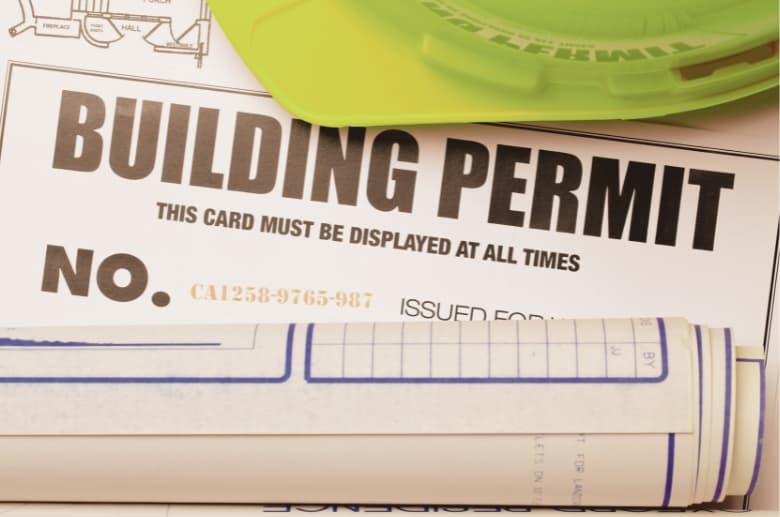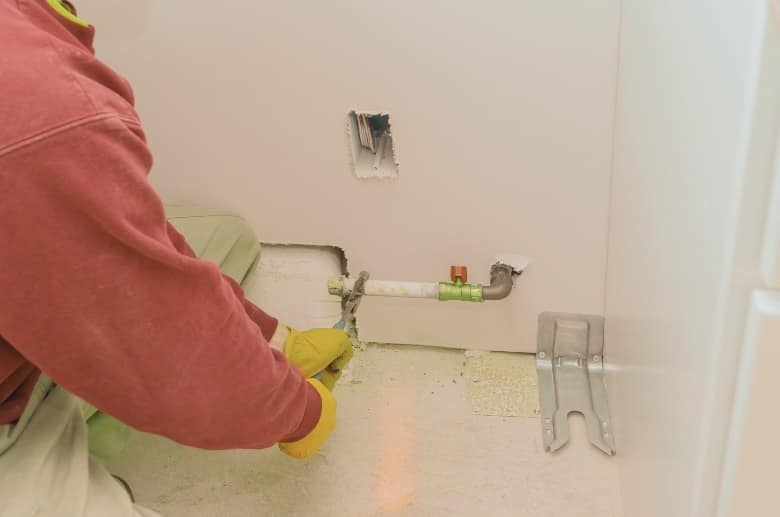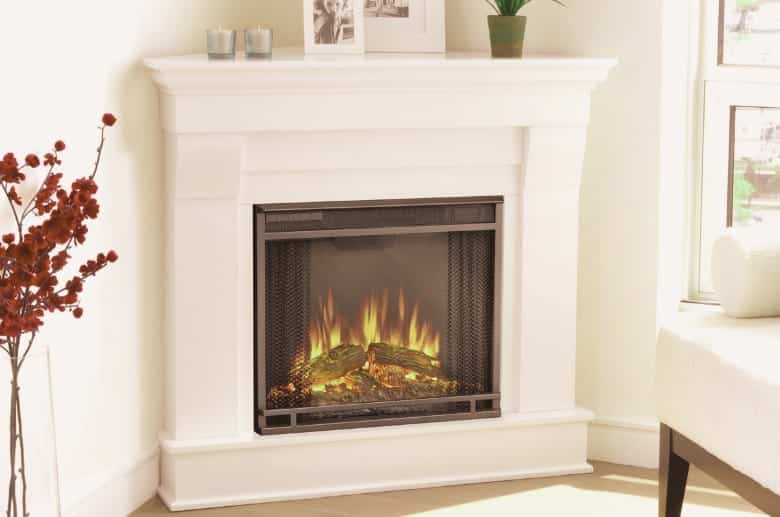Are you tired of stoking and tending to your wood-burning fireplace? Do you want the convenience of lighting a fire with just a button? A gas fireplace conversion may be the perfect home upgrade for you.
Today, more and more homeowners are switching from wood-burning to natural gas fireplaces. And it’s no wonder; the convenience of a gas fireplace is hard to pass up. Gas fireplaces are more eco-friendly and offer better air quality than their wood-burning counterparts.
Still, converting from wood to a gas unit isn’t always simple. Before deciding if it’s right for you, let’s look at what you need to know about gas fireplace conversion.
Can You Convert an Existing Fireplace to a Gas Fireplace?
The short answer is yes, you can convert an existing wood fireplace to gas. But before you do, there are some things to consider:

Building Codes: To comply with local building codes, the size and placement of your gas line may need adjustment. It’s important to have contractors experienced in plumbing examine the existing setup to ensure it meets local regulations.
Safety Regulations: When converting a wood-burning fireplace to gas, the space must be adequately ventilated, and a professional must be hired for an inspection of the area before installation. This can help identify potential safety hazards and meet all safety regulations.
Permits & Inspections: Depending on where you live, you may need to register a gas line installation with local authorities. This typically requires an inspection and approval from your local safety board before issuing a permit.
Gas Line: Do you have a gas line in your home that can support the added demand for a gas fireplace? If not, you may need to have one installed or extended. Look for a team that specializes in conversions.
The Installation Process
To convert a wood-burning fireplace to gas, there are a few steps you’ll need to take. For a standard vented gas insert, the process typically includes the following:

Cleaning or removing the existing fireplace: This includes removing the chimney, damper, and flue.
Addition of Gas Line(s): A professional can assess the existing gas makeup in your home to determine how much needs to be added or adjusted.
Installing the insert: Professional help is recommended, as minor alterations may be necessary before inserting the appliance into its new home.
Connecting the insert to existing gas lines: The project also includes ensuring the gas fireplace is connected to and properly vented.
——
Do You Need to Hire Chimney & Fireplace Expert?
Get free quotes from qualified experts near you. No commitment required!
——
Gas Fireplace Conversion Cost
What type of gas fireplace is best for you? The type of gas fireplace you choose can greatly impact the cost. The three main types are vented gas logs, ventless gas logs, and gas fireplace inserts that range in price from $500 to $5,500.
Vented gas logs cost between $500 and $2,500 and provide mainly aesthetic value instead of heat.
Ventless gas logs are pricier — from $1,000 to $3,000 — and offer aesthetics and heat. However, they may not be recommended for people with respiratory issues. Some local areas may restrict their use entirely.
Gas fireplace inserts offer the most features, usually costing between $2,000 and $5,500. Modern gas inserts may include thermostats or remote-controlled operations to keep your home comfortable while saving energy costs.
Gas Line Installation

If you don’t have a gas line running to your home, you may need to hire an experienced contractor who is licensed and knowledgeable about safely installing it. Gas line installation can cost anywhere from $200 to $1,000 — that’s in addition to the price of retrofitting a gas fireplace.
Installation Location
The cost to convert a fireplace to gas largely depends on where it’s installed. For example, replacing a wood-burning fireplace with a gas fireplace in the corner of the room typically costs between $2,500 and $10,000 (depending on the model and whether it’s prefabricated or custom-made).
If a complete replacement is needed, expect to pay between $5,250 and $10,000 for a built-in gas fireplace conversion and between $7,000 and $12,000 for a peninsula-style gas fireplace. Also, consider how close the existing wood-burning fireplace is to the gas line. The further away, the more it will cost to extend the plumbing.
Labor Costs
Prefabricated units generally range from $500 to $3,000 in labor costs depending on modifications to walls or surrounding areas. For customized fireplace installations that involve more complex alterations and high-end finishes, expect labor costs of up to $10,000.
Types of Gas Fireplaces
A fireplace is a major investment — and can even be considered a work of art for its aesthetic. So, you want to ensure you’re getting the right type of gas fireplace, both in appearance and functionality.
Direct-Vent Gas Fireplace
A vented, or direct-vent, gas fireplace is the most popular type of gas fireplace, thanks to its variety of styles. This type also requires a sealed combustion chamber which helps keep your home warm during winter and cooler in summer while providing a view of the flames from any angle.
It’s one of the safest types of fireplace because of its sealed structure and one of the most versatile since you can install it in various locations.
Ventless Gas Fireplace

A ventless gas fireplace must be carefully considered if you have allergies or asthma, as it can introduce unburned combustion products into the air. They should also comply with all local safety regulations.
On the plus side, ventless gas fireplaces are very economical — they don’t require additional construction, such as a chimney or flue. They come in various styles and sizes designed to fit almost any setting.
Gas Fireplace Insert

With all the latest features, including thermostats and remote-controlled operations, gas fireplace inserts offer a unique solution for people who want more than just an aesthetic display piece. This allows you to keep the look of a chimney and traditional fireplace opening, complete with glass doors, without worrying about a venting system.
Gas inserts fit perfectly into existing fireplaces, and manufacturers have ensured this by providing models designed to slide into a standard opening or be built in place. It’s also one of the most efficient gas fireplaces due to its sealed system.
Advantages of Gas Fireplace Conversion
To change the fireplace to gas or not? That is the question. If you’re teetering on whether to switch, consider these advantages:
Eco-Friendliness
Gas is much cleaner and emits fewer toxins than its wood-burning counterpart. As it burns, it produces less smoke and doesn’t release any dangerous particles into the air. This drastically decreases its environmental impact by reducing greenhouse gas emissions.
Efficiency
Gas fireplaces often provide more heat than wood-burning ones, as they don’t lose energy through the chimney. Plus, you don’t have to wait for the fire to take time to die down before you can turn it off; with a gas fireplace, you only have to press a button.
Maintenance and Cost Savings
Wood-burning fireplaces are costly and, without proper upkeep, can become dangerous. From creosote buildup to improper or inadequate ventilation, a wood fireplace requires extensive maintenance for both the fireplace and chimney liner, which can be expensive and time-consuming.
Gas fireplaces or stoves use a sealed system that prevents leaks while drawing the combustion air from outside your home. This drastically reduces maintenance needs and costs — and can even increase energy efficiency with long-term use.
——
Do You Need to Hire Chimney & Fireplace Expert?
Get free quotes from qualified experts near you. No commitment required!
——
Disadvantages of Converting to a Gas Fireplace
Before switching to a gas fireplace, consider these potential drawbacks:
Fuel Costs
Gas may be more efficient than wood but can also be more expensive. The fuel cost may outweigh any efficiency or safety benefits depending on how often you use your fireplace.
No Wood Aroma
That sweet smell of burning wood isn’t something you’ll get if you decide to replace a wood fireplace with gas. What’s more, the fire won’t crackle or pop like a real flame — just another thing you’ll have to give up in exchange for ease and convenience.
Carbon Monoxide
Gas fireplaces may be cleaner than their wood-burning counterparts but still emit small amounts of carbon monoxide. This is a toxic gas, so any gas fireplace conversion must adhere to local and national safety standards.
Professional contractors can help ensure that the fireplace exhaust leaves your house as it should, including assessing any damage, making proper repairs, and providing information on what to do if the log set and other appliances aren’t working properly.
Ventless Units Ban
Due to potential safety issues (as mentioned above), many states and local governments have banned ventless fireplaces and natural gas logs entirely. Some locations have restrictions on their use; for example, some U.S. counties may allow ventless fireplaces but require periodic inspections.
In states like Massachusetts, Alaska, Minnesota, Utah, and Colorado, ventless fireplaces are illegal and can come with hefty fines for those caught using them.
Choosing a Gas Fireplace Installer
This rule is worth repeating for any DIYer: Just say “no” to installing a gas fire in an existing fireplace. Even if you think you have the right skills, this job is best left to certified professionals. They have the proper tools and equipment to do the job correctly. Doing it yourself voids your warranty and could lead to a potentially dangerous situation for your property if done incorrectly.
A professional installer will also be able to answer all your questions and provide guidance on what kind of fireplace works best for you. A qualified technician can not only properly install the gas line, but they will also make sure your appliance is up to code and properly serviced.
Here are some quick money-saving tips for converting your existing wood-burning fireplace to a gas one:
Get quotes from multiple professionals: Don’t settle for the first contractor you meet. Get several quotes to help you compare prices and services offered.
Shop around for the best materials: In a conversion, you may need to add tiles or a mantel. Shop online and at secondhand stores for the best prices without compromising quality.
Watch out for chimney-cleaning costs: You’ll likely need your existing chimney cleaned before installing a gas fireplace. So be sure the cost of this service is included in your quote.
Look for added value: Quality installers will do more than just hook up the gas line and insert the appliance. Some may also offer a satisfaction guarantee or additional services (e.g., annual inspections, cleaning, etc.) to maintain the appliance properly.
Questions to Ask Your Installer
When you’re finding a qualified gas fireplace installer, there are several questions to consider.
- Are they licensed and insured?
- Do they provide free quotes?
- What type of gas fireplace do they recommend?
- How long will the installation process take?
- Will they handle any necessary permits or inspections?
- Do they provide any warranties on parts and service, and what type of maintenance do they advise?
- Do they have a National Fireplace Institute certification?
Final Word
Should I convert my wood-burning fireplace to gas? That’s a question only you can answer.
It isn’t always simple to convert wood fireplaces to gas. But with careful due diligence, you’ll certainly reap the rewards of enjoying a warm and cozy fireplace during those cold winter months. Before pulling the trigger on any investment, check all local and state safety guidelines and any additional inspections or permits you may need.
Don’t know where to start? We can connect you with vetted professionals who can provide a competitive quote, help you troubleshoot for repair, and answer any questions. With a myriad of gas fireplace options around, you’ll be able to pinpoint the perfect upgrade for you — with many saying that the process pays off in comfort, convenience, and cost savings!






